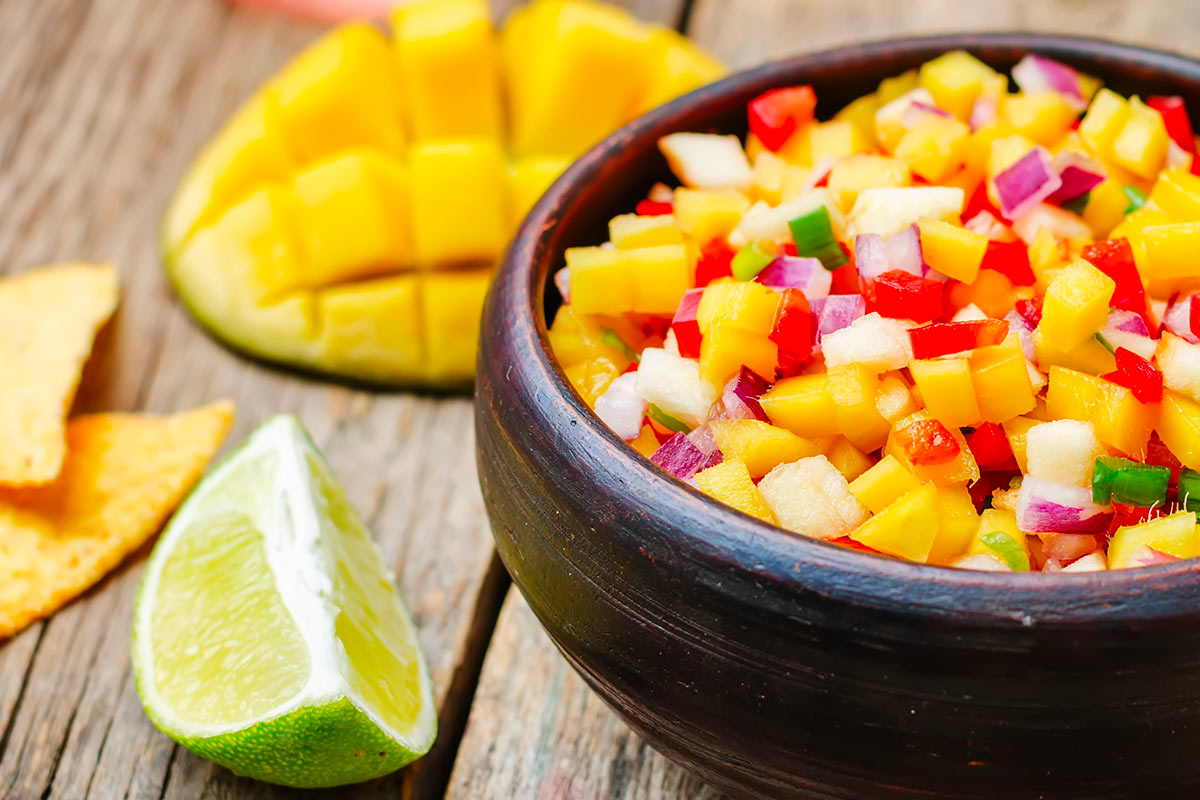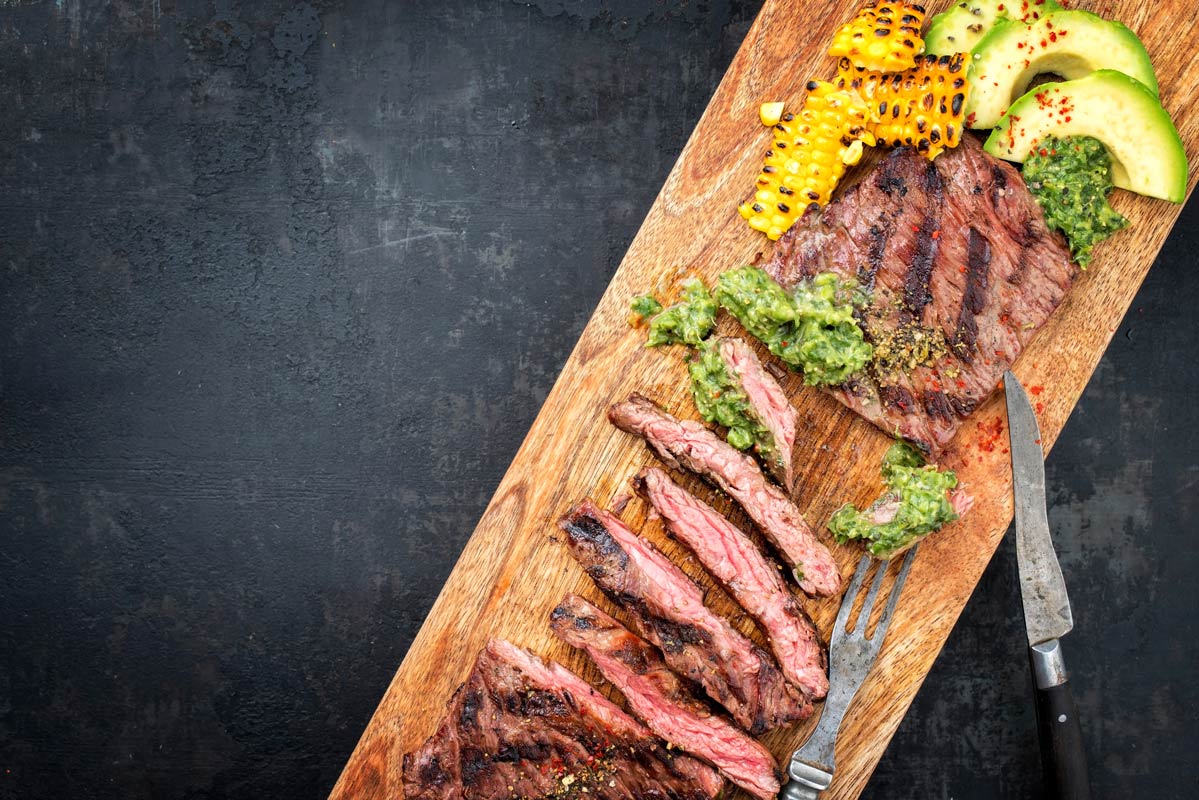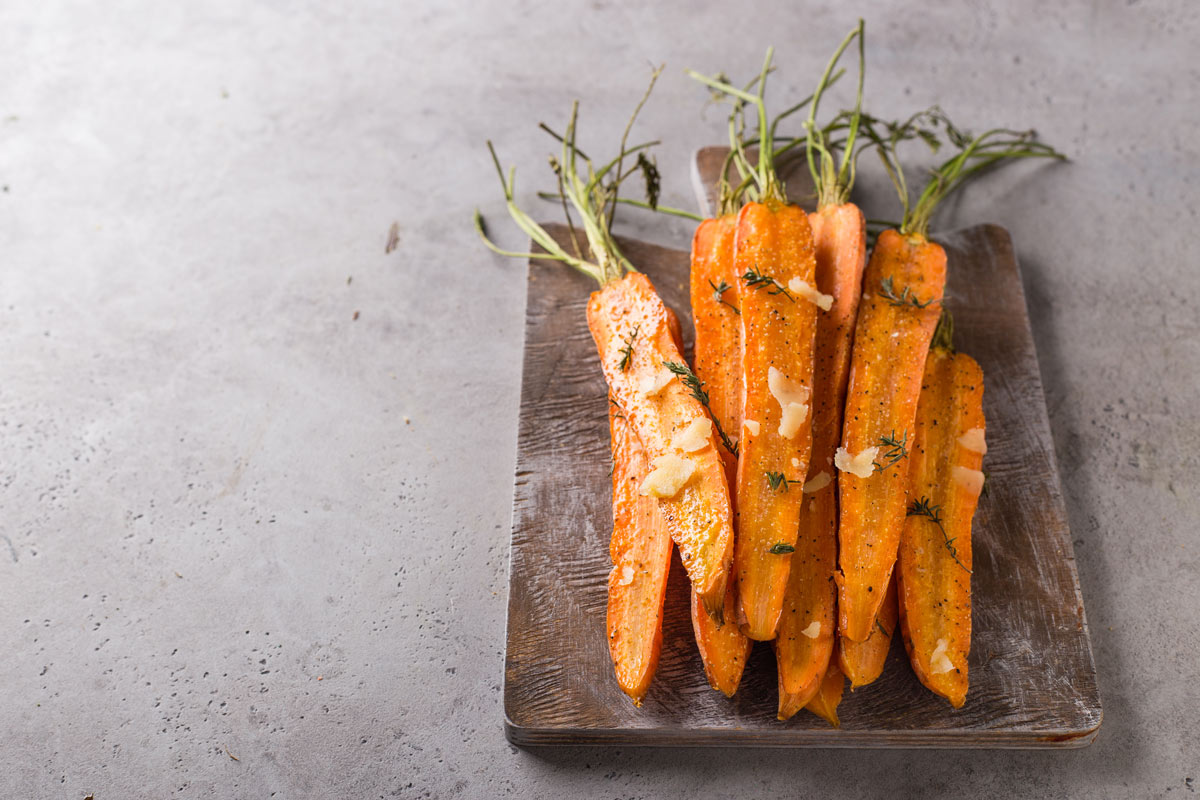Roasted chicken is the little black dress of the table, welcome on the menu of a dinner party or a weeknight meal. The following bright-tasting salsa is also terrific with fish, a popular entrée in Chile, a country with over 2,000 miles of Pacific coastline. Dice the vegetables extra fine and serve the salsa with cold shrimp for a warm-weather appetizer.
Ingredients
For the salsa:
- 3 ripe mangos, peeled, pitted, and diced
- 1 red bell pepper, cored, seeded, and diced
- 1 jalapeño, cored, seeded, and finely diced
- 1/2 cup diced red onion (about 1/2 a small onion)
- Zest of one lime
- 1/4 cup fresh lime juice
- 3 tablespoons extra virgin olive oil
- 2 teaspoons honey
- 1 teaspoon merquén or 1/2 teaspoon cayenne, or to taste
- 1/2 cup toasted hazelnuts or shelled pistachios, roughly chopped
- Coarse salt (optional; don’t use if nuts are salted)
For the chicken:
- One 4-pound roasting
chicken, giblets removed - Extra virgin olive oil
- Coarse salt (kosher or sea)
- Freshly ground black pepper
Directions
Step 1
Make the salsa: Combine the mangos, bell pepper, jalapeño, onion, lime zest and juice, olive oil, honey, and merquén. Stir gently with a rubber-bladed spatula. Add the nuts and a pinch of salt, if using, and stir to combine. Set aside while you roast the chicken.
Step 2
Preheat the oven to 400°F. Truss the chicken, if desired. Rub on all sides with olive oil and season generously, inside and out, with salt and pepper. Place on a wire rack over a rimmed baking sheet or roasting pan. Place in the oven. Roast until the chicken is golden brown and an instant-read meat thermometer reads 165°F when the probe is inserted in the deepest part of a thigh, about an hour and 15 minutes. Let the bird rest for 10 minutes before carving. Stir the salsa once more before serving with the chicken.
Serves 3 to 4




